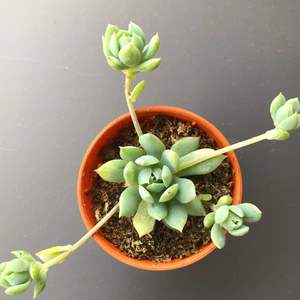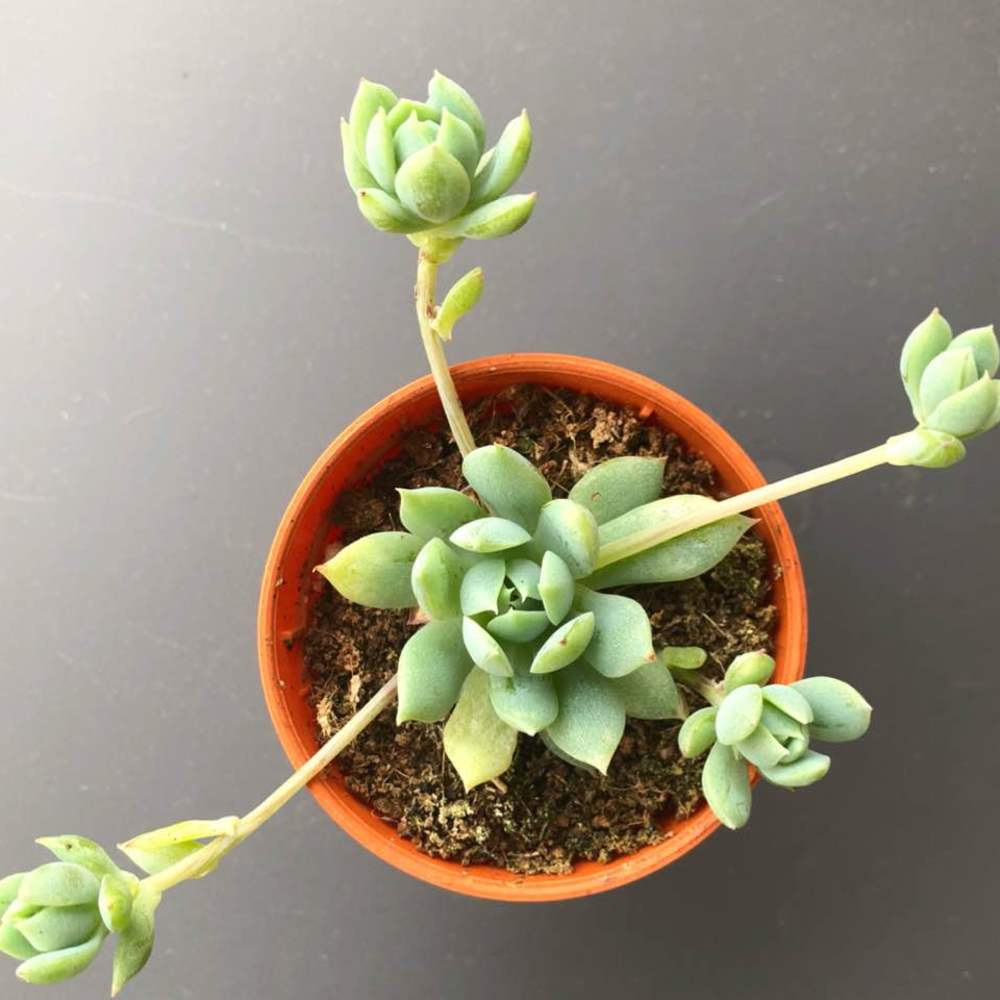Plant Experience
Detail
Graptopetalum macdougallii is an attractive succulent plant with leaves arranged in rosettes. Each ground-hugging rosette bears up to 50 leaves and is up to 3 inches (7.5 cm) in diameter. The leaves are up to 1.4 inches (3.5 cm) long, up to 0.6 inch (1.5 cm) wide, rounded, tongue-shaped to semi-spathulate, bright bluish to greenish, glaucous, and sharply pointed at the apex. The flowers are up to 1 inch (2.5 cm) across, each with 5 petals marked with dense red lines.
How to Grow and Care
The rules for Graptopetalums care are similar to those for most succulents. Container-bound plants thrive in a mixture of peat, sand or other grit, topsoil and a little bit of compost. Full sun is the best situation but they will also grow in partial sun with slightly rangy results.
Graptopetalums need excellent drainage and moderate water. You can tell when to water by sticking your finger in the soil. If it is dry several inches down or the fleshy leaves are looking shriveled, you should water. Overwatering is a cause of root rots and the plant can get several pest infestations.
The Graptopetalums are generally easy to propagate, by seeds, leaf cuttings or offsets. Any rosette that breaks off has the potential to root and start a new plant. Even a leaf that drops off will root below the parent plant and produce a new rosette quickly. The new plant feeds off the leaf until it shrivels up and falls off. By then the new little ghost plant has rooted and sprouted new leaves.
How to Grow and Care
The rules for Graptopetalums care are similar to those for most succulents. Container-bound plants thrive in a mixture of peat, sand or other grit, topsoil and a little bit of compost. Full sun is the best situation but they will also grow in partial sun with slightly rangy results.
Graptopetalums need excellent drainage and moderate water. You can tell when to water by sticking your finger in the soil. If it is dry several inches down or the fleshy leaves are looking shriveled, you should water. Overwatering is a cause of root rots and the plant can get several pest infestations.
The Graptopetalums are generally easy to propagate, by seeds, leaf cuttings or offsets. Any rosette that breaks off has the potential to root and start a new plant. Even a leaf that drops off will root below the parent plant and produce a new rosette quickly. The new plant feeds off the leaf until it shrivels up and falls off. By then the new little ghost plant has rooted and sprouted new leaves.
Album (1)

kensong
2018-06-16

This is my first growing diary.


Elite Article













